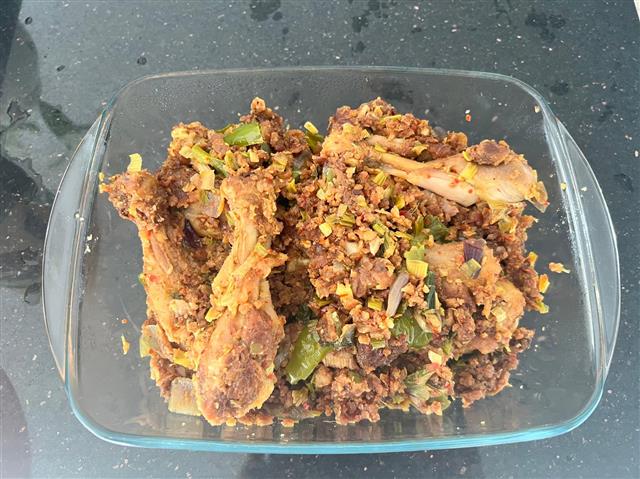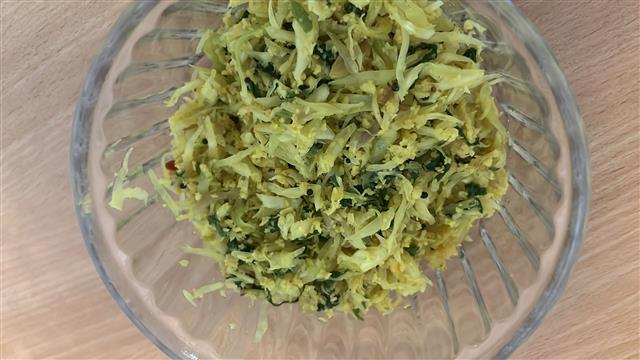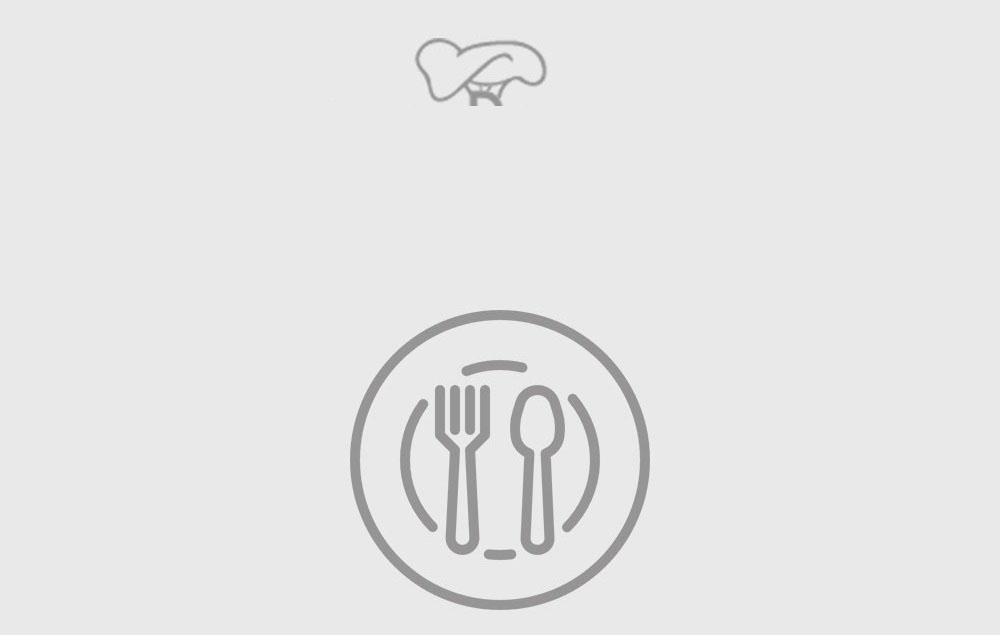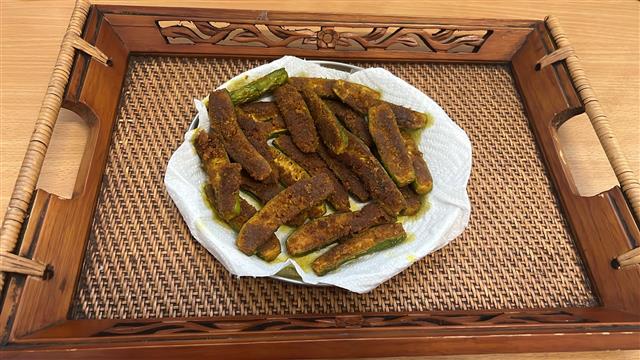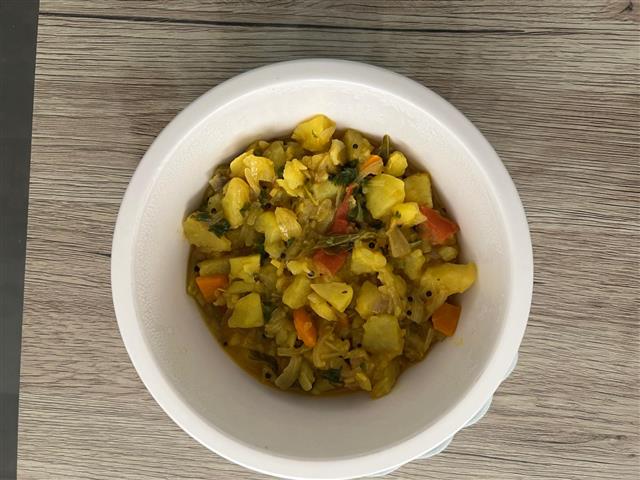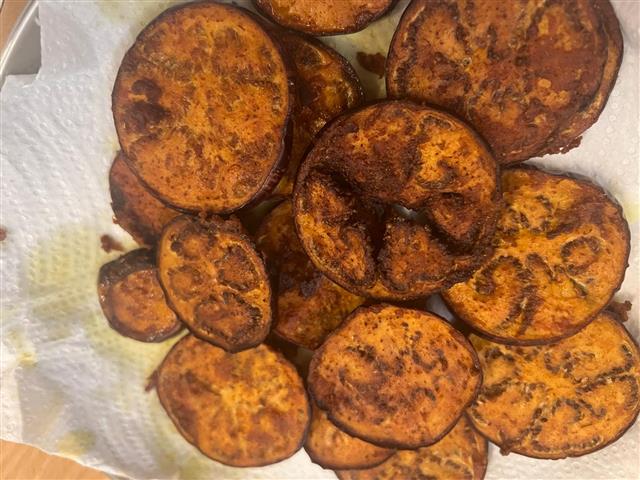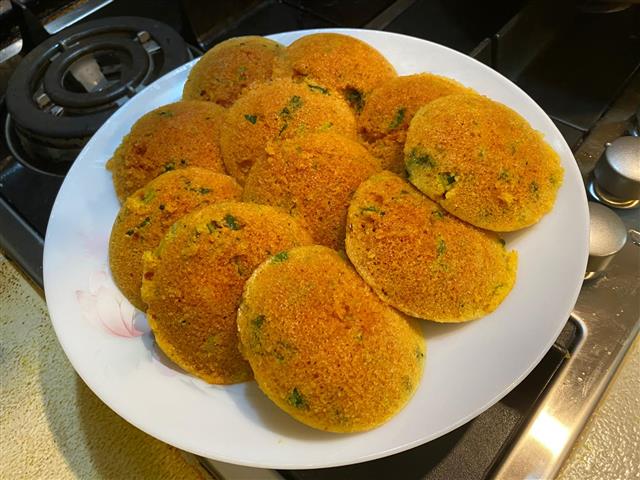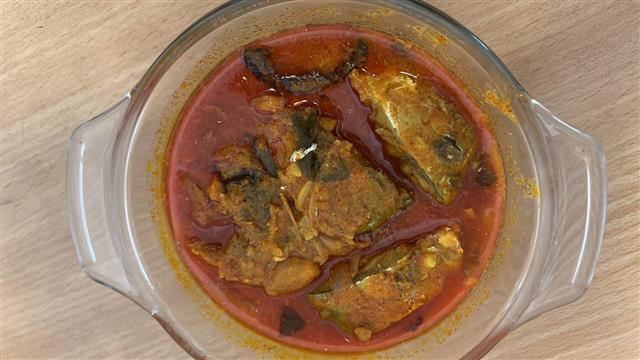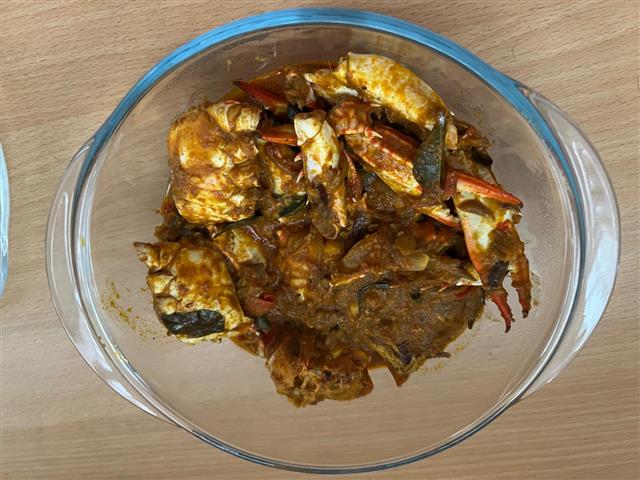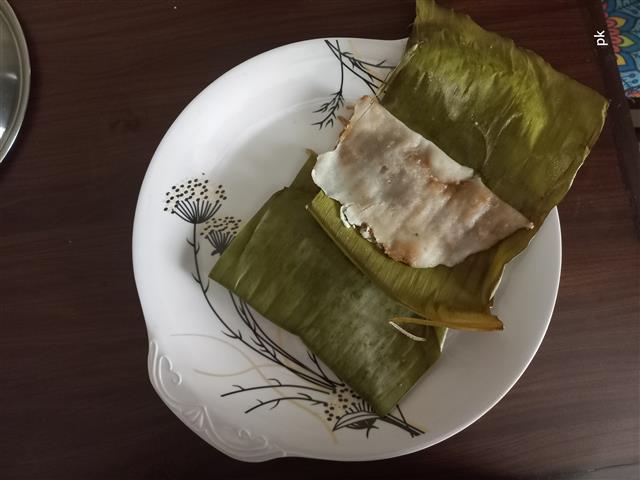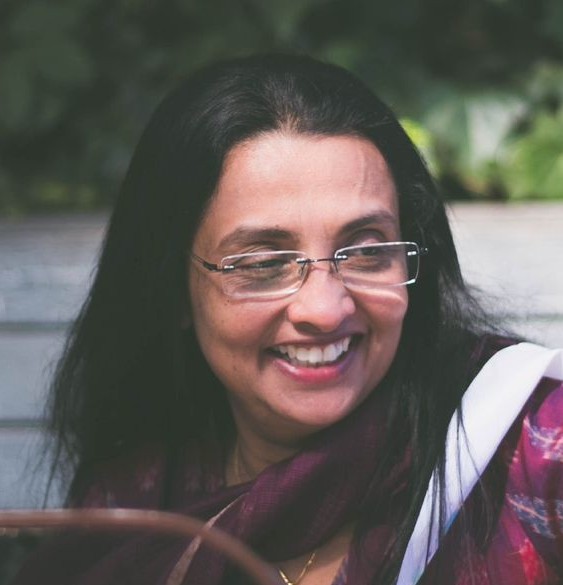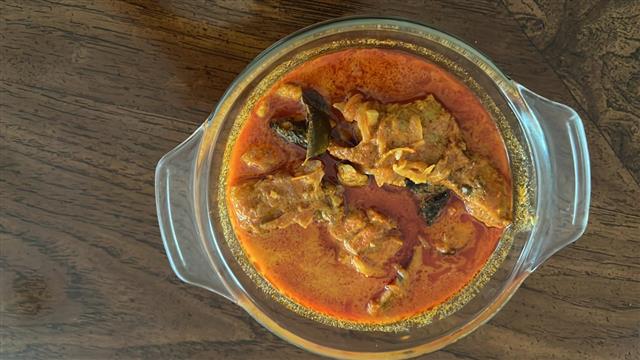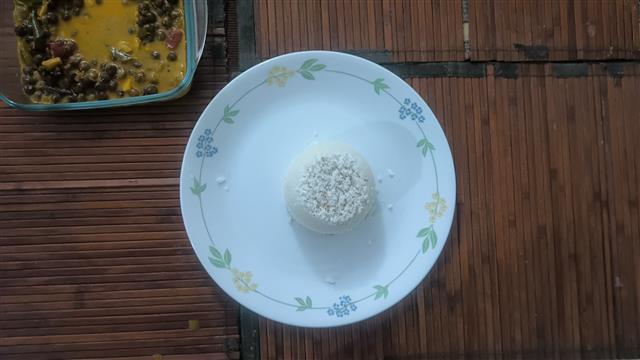
Nankhatai
(4 reviews)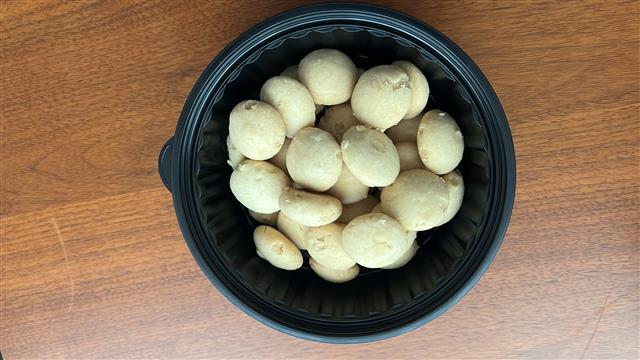
Nankhatai is India's traditional shortbread. An eggless biscuit made with a mix of flour, ghee, and sugar. Crisp at the edges, tender in the middle, and aromatic from ghee and/or cardamom. It's the kind of recipe that has travelled through cultures, trade routes, and kitchens without losing its basic identity.
Often referred to as Indian butter biscuitsin South Indian bakeries.
Ingredients
Directions
- Preheat the oven to 160°C.
- Sieve the maida and sugar and mix the ingredients together. Add a pinch of cardamon or nutmeg powder for flavour.
- Slowly add melted ghee and knead it into a soft dough.
- Make 10-15 small balls and roll it on your palm to make it smooth
- Place it inside the preheated oven. Bake it for 25 minutes.
- Cool on wire rack before serving.
Cooking Tips
• Use good ghee – The entire character of a nankhatai rests on the ghee. Fragrant, homemade ghee brings a nuttiness. If using store-bought, go for full-fat varieties with a rich aroma.
• Cracked tops are a good thing – It means you got the ratio of flour to fat right.
• Use a sieve – Both maida and powdered sugar must be sifted to prevent clumps and ensure an even texture.
How to Serve
• With a cup of strong South Indian filter coffee or cardamom chai,
• As part of a festive sweet box.
• Paired with mango shrikhand or basundi for a mixed dessert.
• Crumbled over cake, custard or ice cream as a topping.
• Warmed and dipped in turmeric or saffron milk
The Story Behind Nankhatai
Buttery, melt-in-the-mouth Indian shortbread biscuits with roots in spice ports and tea-time rituals. Nankhatai or Indian Butter Biscuit is more than a biscuit but a reminder of tradition, and the kind of home baking that doesn't rely on fancy gadgets or exotic ingredients.
A well-made nankhatai crumbles between your fingers, perfumes the kitchen with ghee and cardamom, and brings a smile to your face.
The story of nankhatai begins at a cultural crossroads, in the 16th-century spice port of Surat. Dutch traders and bakers had introduced European-style bread and pastries to the Dutch population living in the region. A Dutch couple created a flaky, buttery biscuit made with eggs called Koejke in their bakery, but when they left, a Parsi baker named Faramji Pestonji took over.
Finding that locals didn't care for yeast-leavened bread or egg-based biscuits, he created something new. A firm, sweet biscuit that kept well and suited Indian palates. It was baked without eggs, gently flavoured with sweet-tasting Indian spices and made rich with ghee.
The name itself carries Persian roots, naan (bread) and khatai (biscuit). Over the centuries, this simple creation evolved from a Dutch pastry adaptation into a pan-Indian tea-time snack.
In my aunt's kitchen, nankhatai was one of the first bakes attempted, not in an oven, but on an old cast-iron tawa with a metal lid. The sand was spread underneath the tray to create the oven-like heat effect. The scent of those ghee-rich discs rising slowly over a low flame is etched into my memory, along with the burnt-bottom ones that were somehow the tastiest.
Today, while ovens and air fryers have the stovetop style in many homes, the magic remains.
Nestled in golden tins during Diwali in North India, Nankhatai has stood the test of time by doing one thing -- delivering joy with each crunchy bite.
Pro Tips for Perfect Results
→ Rest the dough – High-fat doughs benefit from 10–15 minutes of rest before shaping. It prevents excess spreading in the oven.
→ Don't wait for browning – These are pale cookies. If you wait until they are golden brown on top, they'll dry out inside. A slight golden ring at the base is the signal they're done.
→ Add Cardamom – Even just a pinch can lift the whole dough. Crushed fresh is far better than pre-ground.
Nankhatai Variations
- Besan Nankhatai
Earthy and nutty. Replace a portion of maida with chickpea flour.
- Rava Nankhatai
Made with semolina for crunch. Ideal for coastal climates.
- Cashew or Pista Nankhatai
Nut powders folded into the dough for richness.
- Saffron Nankhatai
Infused ghee with saffron strands for a royal touch.
- Chocolate Nankhatai
Add cocoa powder and a few chocolate chips as kids love them.
- Coconut Cardamom
Desiccated coconut and cardamom for a tropical twist.
- As tart shells or bases
Use these for mango, rose, or peda-style fillings. Press intoa tart or muffin tin instead of rolling the dough.
- No-oven option
A heavy-bottomed kadai or pressure cooker filled with salt or sand, preheated and covered, mimics a low oven.
Diet-Friendly Adaptations
Vegan Ghee can be substituted with coconut oil, cashew butter or vegan butter. Choose one with a neutral flavour if you don't want the coconut aroma.
Gluten-Free Almond flour and rice flour work surprisingly well. A little cornstarch or arrowroot gives structure.
Low-Sugar Reduce the sugar by 20–30% and increase spice. Jaggery powder works, though the texture will change.
Storing & Reheating Tips
→ Storage: Store in an airtight tin for up to 2 weeks in a cool, dry place.
→ Fridge: Avoid refrigeration as it causes them to harden.
→ Reheat: For extra crunch, reheat in a warm oven (150°C) for 3–4 minutes.
→ Freeze: Freeze the dough in a freezer-friendly bag or container for 2 to 3 months. Thaw and add a a few drops of melted ghee to soften the dough.
Common Mistakes to Avoid
→ Overworking the dough: This is not bread or chapati. Overmixing develops gluten and dense, and ruins the soft, crumbly finish.
→ Using cold ghee: Always use melted and warm ghee. It helps bind the dough and enhances aroma.
→ Too much ghee: A soft dough is good but not a greasy one is not. Excess ghee causes the cookies to flatten or crack too much.
→ Baking too long: Most cookies and biscuits continue to cook after they come out of the oven. If they feel soft when hot, that's fine as they'll firm up.
→ Adding liquid: Don't be tempted to add milk or water if the dough feels dry. Instead, press gently and it will come together.
Frequently Asked Questions
- Can I store nankhatai long term?
Yes! Store in airtight tins, and they last 2 to 3 weeks easily. Avoid moisture. You can even vacuum-seal for longer shelf life.
- Can I freeze the dough?
Absolutely. Roll into balls and freeze. Bake directly from frozen with an extra 2 to 3 minutes.
- Can I bake it on a stovetop?
Yes. Use a deep pan or pressure cooker without a whistle. Place a trivet inside, add salt or sand at the bottom, and bake on low heat.
- Is this okay for kids?
Yes! It's eggless, easy to hold, and has a mildly sweet flavour. It is perfect for small hands and school boxes.
- Is baking soda necessary?
Traditional recipes don't use any rising agent. Some modern versions add a pinch of baking soda for a softer and fluufy bite, but it's optional.
- Can I make it in the airfryer?
Of course! Bake at the same temperature but reduce the time to 16 to 18 minutes.
Equipment Needed
→ Mixing bowl
→ Measuring cups and spoons
→ Baking tray or pressure cooker
→ Parchment paper or greased steel plate
→ Oven or heavy-bottomed pan with lid
→ Wire rack for cooling
